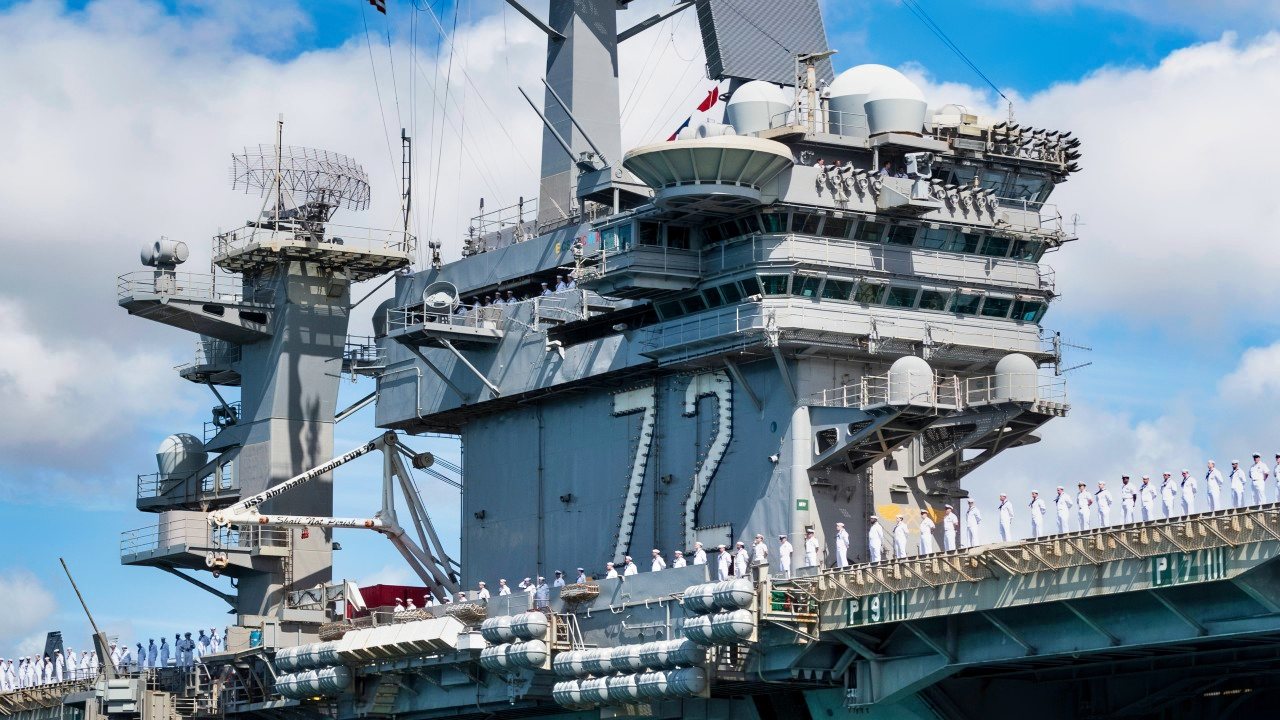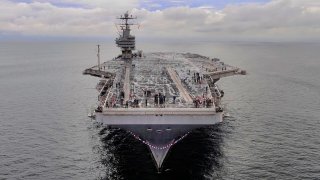The U.S. Navy Did the Unthinkable: It Sold an Aircraft Carrier for a Penny
Despite the allure of preserving historic aircraft carriers as museum ships, the USS Kitty Hawk (CV-63) and USS John F. Kennedy (CV-67) were sold for just one cent each to a shipbreaker in Texas. High costs and maintenance challenges derailed efforts to save these Cold War-era carriers.
What You Need to Know: Despite the allure of preserving historic aircraft carriers as museum ships, the USS Kitty Hawk (CV-63) and USS John F. Kennedy (CV-67) were sold for just one cent each to a shipbreaker in Texas. High costs and maintenance challenges derailed efforts to save these Cold War-era carriers.

-While five aircraft carrier museums exist in the U.S., all feature older, World War II-era vessels. Attempts to preserve more modern carriers like the USS Enterprise (CVN-65) have been hindered by immense financial and logistical challenges, including complex nuclear decommissioning processes.
-Unfortunately, the U.S. public’s interest in such preservation is minimal.
Why Aircraft Carriers Are Being Scrapped Instead of Preserved as Museums
Some collectors, of course, have deeper pockets. Jay Leno owns at least one armored car, while Brad Pitt owns a World War II-era Supermarine Spitfire and a Cold War-era T-54/55 series tank, the latter a prop from his film World War Z.
Likewise, Peter Jackson, director of The Lord of the Rings films, has a collection of military vehicles, including aircraft, dating back to the First World War. Late Microsoft co-founder Paul Allen made enough money to create a literal museum of military vehicles.
One thing that Leno, Pitt, Jackson, Allen, and others haven't managed to purchase is an aircraft carrier. And cost might not be what held them back – most readers probably could have met the selling price for the U.S. Navy’s last two conventionally powered carriers.
In 2022, the retired carriers USS Kitty Hawk (CV-63) and USS John F. Kennedy (CV-67) were sold to International Shipbreaking Limited in Texas for just one cent each. The carriers were retired in 2009 and 2007, respectively, and the USS Kitty Hawk Veterans Association raised $5 million to preserve the retired flattop as a museum ship.
Sadly, the sea service deep-sixed that plan, and along with the USS John F. Kennedy, she was instead sold. To add insult to injury, the Navy reportedly even paid to have the ships delivered to the ship breaker.
The vessels are now being broken apart in a process that could take around 18 months each.
Why Not a Museum?
There are five aircraft carrier museums in the United States – four of them are Essex-class carriers, while the fifth is a Midway-class flattop. No Cold War carriers have been preserved as carriers, and it is disappointing that CV-63 could not be saved.
The decision came down to money.
While the Navy was happy to sell the carriers to a scrapper for just a penny, the sea service requires that retired warships are not simply left to rot away, and it costs a great deal of money to ensure the carriers are properly maintained. As museums, many of these warships barely make enough from visitors to keep the lights on. They require grants when costly repairs are needed.
No Future Aircraft Carrier Museums
For those who would relish the chance to see a Nimitz-class carrier preserved, well, it will never happen.

In 2012, the former USS Enterprise (CVN-65), the world's first nuclear-powered aircraft carrier, was retired after more than five decades in service. At the time of her inactivation, she was the third-oldest commissioned vessel in the Navy, after the wooden-hulled frigate USS Constitution and the USS Pueblo, the latter of which was captured by North Korea in January 1968 and never retired from the Navy rolls.
CVN-65 was officially decommissioned in February 2017.
Naval enthusiasts called for the ship to be converted into a museum, but it was deemed too expensive, in part because the ship would need to be partially dismantled to remove her eight nuclear reactors. That task proved to be complicated, and the Navy delayed the recycling of the Enterprise until a more environmentally responsible process could be developed.
Sadly, while the Kitty Hawk would have been easier to convert into a museum, it wasn't meant to be. It would have required a deep-pocketed investor like Paul Allen or Elon Musk to step up, and the costs to fund the conversion from warship to floating museum are only the start. Unfortunately, the bulk of Americans lack the interest in seeing such things preserved.
Author Experience and Expertise: Peter Suciu
Peter Suciu is a Michigan-based writer. He has contributed to more than four dozen magazines, newspapers, and websites with over 3,200 published pieces over a twenty-year career in journalism. He regularly writes about military hardware, firearms history, cybersecurity, politics, and international affairs. Peter is also a Contributing Writer for Forbes and Clearance Jobs. You can follow him on Twitter: @PeterSuciu.
You can email the author: [email protected].
All images are Creative Commons and/or Shutterstock.


